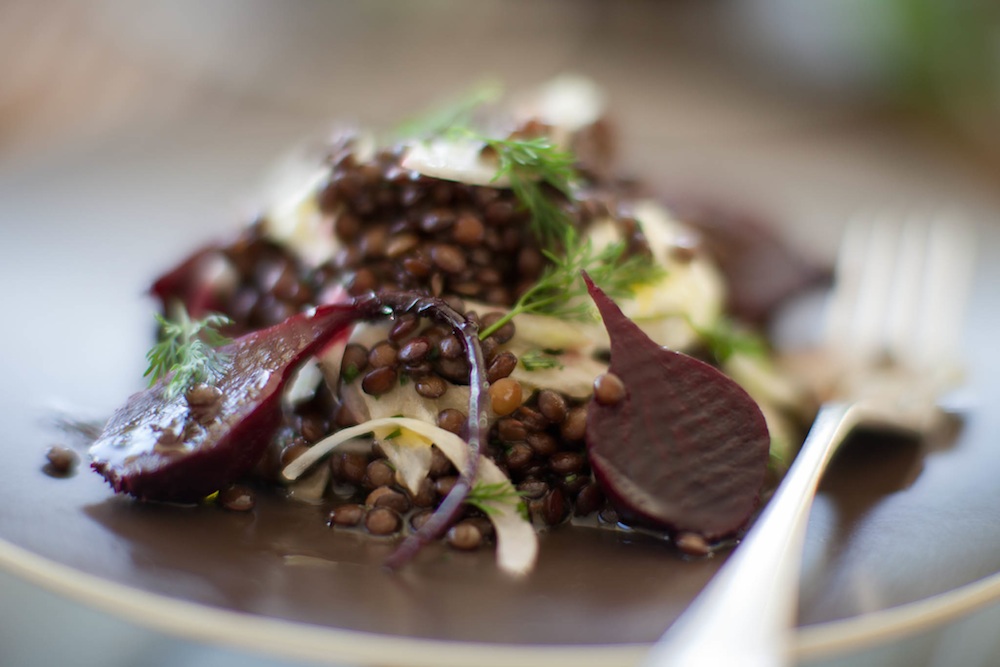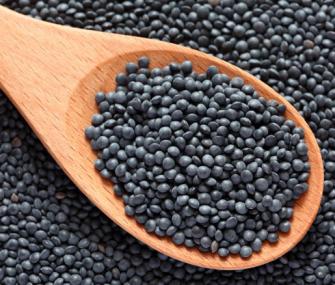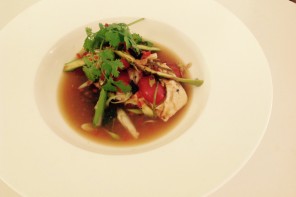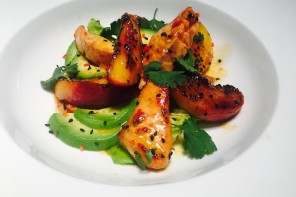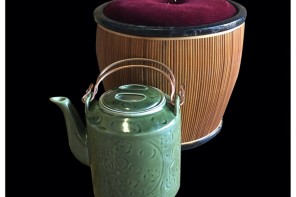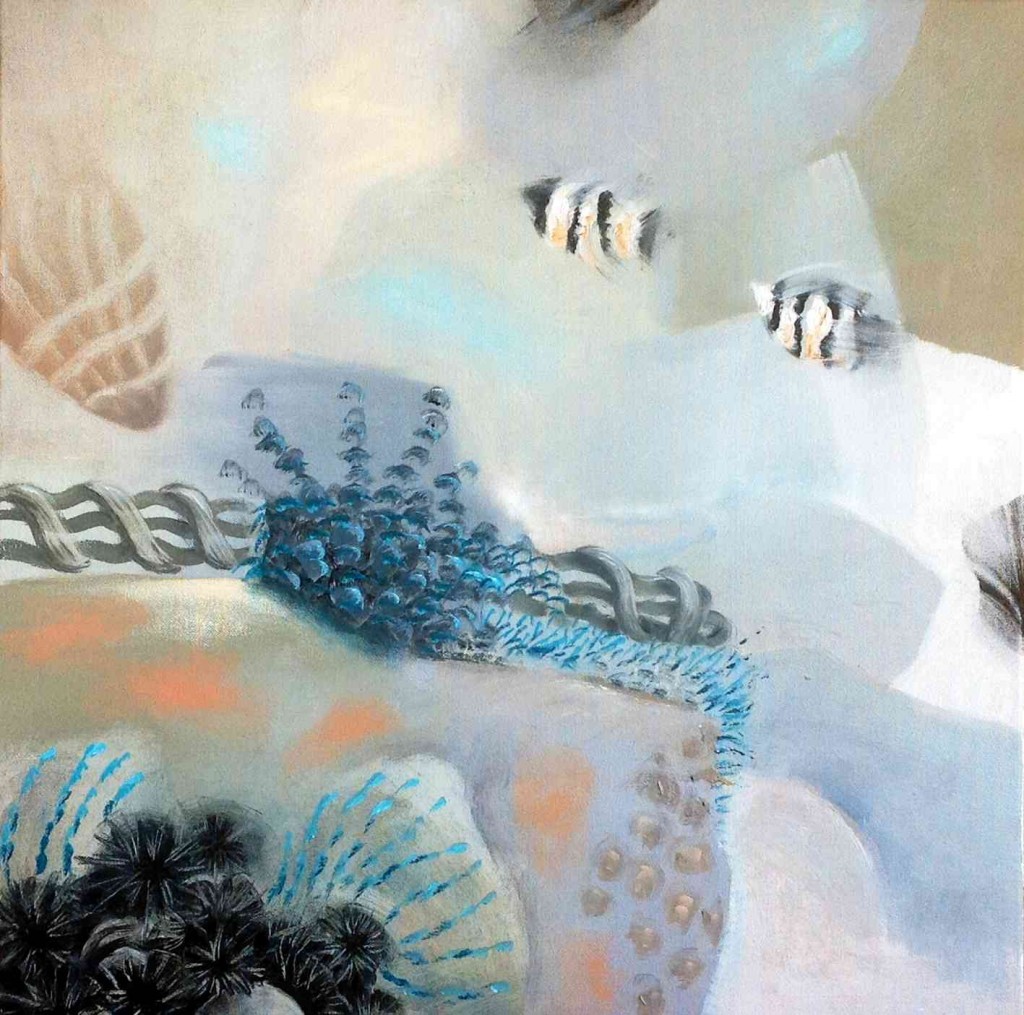Belinda Jeffery’s delicious salad uses black Beluga lentils to pack an extra punch of colour and flavour – perfect for a light lunch or as part of a full meal.
This earthy salad regularly appears on our lunch table, invariably accompanied by a loaf of sourdough bread to mop up the mustardy dressing. It combines some of my favourite ingredients in the most satisfying way – flinty lentils jostle fine slices of fennel and the dark sweetness of beetroot, bound with a potent mustard dressing and the refreshing green lift of dill. I happily eat this as a stand-alone lunch, but have also served it (minus the goat’s cheese) with both smoked mackerel and kiln cooked salmon, and the combination sings.
Serves 4
12 small or 4 medium-sized beetroot (approx. 400g)
1 heaped cup (220 g) Beluga or Puy-style lentils
3 cups (750ml) cool water
½ medium-sized bulb fennel, very finely sliced, or more if you like
1 tablespoon finely chopped dill
About 150g soft goat’s cheese marinated in olive oil
Tiny dill sprigs, to garnish
Mustard dressing:
1 heaped teaspoon Dijon mustard
100 ml extra-virgin olive oil
3 teaspoons red wine vinegar
1 ½ teaspoons sea salt, or more to taste
Preheat your oven to 180C.
Trim the leaves off the beets leaving about 1 cm of stalk attached to the root. Wash them thoroughly and shake off the excess water, then wrap each one tightly in foil and sit them on a baking tray.
Put the tray in the oven and cook the beets for about 50 minutes, or until they’re tender – larger beetroots could take up to 1 ¼ hours. The best way to check is by sliding a fine metal skewer into one; it should go in with little resistance. When they’re ready, take them out and leave them to cool for about 10 minutes.
Unwrap the beetroots and rub off the skins and stalks with your hands. (I slip on a pair of prep gloves to do this as it’s quite messy and tends to leave your hands with a crimson glow!) Leave them until they’re just cool enough to handle, then slice them lengthwise into halves, quarters or sixths, depending on their size. Pop them into a bowl and sit them in a cool spot.
As lentils can be dusty give them a really, really good wash before cooking them. I sit them in a big fine sieve and swish them around in lots of cold water, changing the water a few times until it’s clear.
Plop the lentils into a medium-sized saucepan and cover them with 3 cups (750 ml) cool water. Bring them to the boil, then reduce the heat and let the lentils bubble gently for about 20 minutes or until they’re cooked but still have a nice little bit of chewiness to them. Start checking them early on (after about 12 minutes) as the cooking time can vary quite a lot depending on how fresh they are.
While the lentils are cooking, make the dressing. Spoon the mustard into a medium-sized bowl and slowly whisk in the oil. When it’s incorporated mix in the vinegar and salt. Taste the dressing and adjust the balance of flavours to suit you, then set it aside.
As soon as the lentils are ready, tip them into a sieve or colander. Give them a few really good shakes to get rid of any excess water, then mix them into the dressing. Leave them in a warm spot, stirring them occasionally. (Although, I suggest serving the salad warm, you can make the dish hours ahead to this point, and continue with the recipe just prior to serving if you’re happy to eat the lentils at room temperature.)
Thoroughly mix the fennel and dill into the lentils, then divide the mixture evenly among 4 plates. Nestle the beetroot wedges into the lentils, then crumble goat’s cheese over the top, and finish off with a sprinkle of dill sprigs.
Beluga lentils…
I’ve only started using these lovely small black lentils recently, and they’re absolutely terrific. Like Puy lentils, they hold their shape when they’re cooked, and have a similar, satisfyingly chewy texture. Their colour fades a little once they’re cooked, however it’s still a rather wonderful dark grey/brown which looks startling when combined with more vibrant tones.
For more recipes from Belinda Jeffery go to: belindajeffery

